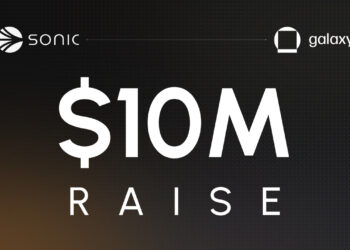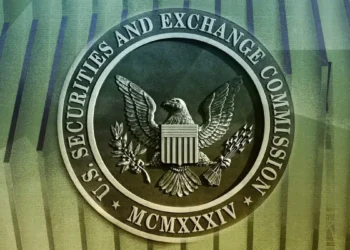Blockchain is a technology that is altering the state of different industries. It is a distributed ledger that is stored on a network of nodes scattered all over the world. There are different consensus mechanisms in blockchains, with some needing massive computing energy to verify transactions and mine blocks, while others use validators.
EDI is the short form for Electronic Data Interchange, and it is a communication system where companies interact with one another. Rather than communicating with paper documents, different firms can send documents electronically.
Using this electronic means of sending documents comes with several perks that may be non-existent if paper-based methods were used. For instance, when a delivery mechanism is automated, the chances that human error may creep in is reduced drastically. Some errors may make the company lose millions of dollars or end up being slammed with a court case. EDI also saves time, which would have been spent in transporting the paper documents from one spot to another.
When an EDI transaction is being done, data moves from one firm’s computer to the devices of another company in real-time. With this feature, it is easy for information to be transferred from one spot to another in minutes, not minding the distance between both parties.
An example of an EDI transaction is when the invoice of goods supplied is sent from the computer application of the supply company to the application of the client. This technology can also be used to send data, information, and records to multiple locations.
What is EDI?
EDI came into existence in the 1970s because different companies were looking for a suitable method to transmit information from one spot to another. In 1975, the first ever EDI standards were released in the transportation and logistics sector, allowing firms to easily interact with one another without stress.
Every EDI system is outfitted with standards that should be followed, and every transaction has to be defined by the EDI message standards. To ensure that only high-quality data is moved through the pipelines, it is advisable for companies to create a monitoring system. There are different standards that guide EDI conversations like Accredited Standard Committee X12, TRADACOMS, Peppol, ODETTE, and GS1.
An EDI mechanism can transfer data between two computers from one point to another through the internet, without the need for a middleman system to make the process happen. Usually, this type has layers of security to ensure that intruders do not intercept the data files during the transfer process.
In other cases, the EDI mechanism may be a Value-added network, meaning that there is an intermediary that monitors the exchange of data between both parties.
Out of the aforementioned, many companies in the North American region utilize the American National Standards Institute/Accredited Standards Committee X12. As for other continents, a great deal of firms prefers to use Electronic Data Interchange For Administration, Commerce, and Transport- EDIFACT. It is important to note that different industries can customize their usage of the major standards.
Every standard has a location and order that the data contained in the EDI document should follow to be transmitted appropriately. Usually, an EDI document is divided into parts, which are the elements, segments, and transactions. An element is made up of data sets, and when elements come together, they form a segment. The combination of segments creates a transaction. This means that every EDI transaction is made up of segments.
For companies that want to use Electronic Data Interchange systems, they can send the files through a third party or an internal system in three(3) steps
- Data identification,
- EDI document creation
- EDI document transmission.
Data Identification
The data that a company wants to send may be an invoice, a bill of lading, or another document. Usually, the company uses software to extract the needed data from its database. Another option is to manually type in the necessary data.
EDI Document Creation
After the data has been extracted, it is placed into a document that is ready for submission. For companies that want to reduce the chances of wrong data sets being inputted in the document, it is advisable to use extraction software. This is because it will easily source out the necessary data and input it automatically into a document.
EDI Document Transmission
A document is transmitted in different methods, with or without the need for an intermediary. For the first option, the data is transferred through the internet without a middleman. As for the latter, a third-party service provider is needed.
Before an EDI document is received by the other party, a similar process has to be followed. The recipient may receive the document in any of the two ways, which are through a third-party network provider or via the internet.
Once the document is received, the data is converted into a usable format by the computer of the receiving company. Immediately the document is received and converted, a confirmation receipt is sent to the system of the sender.
The state of EDI has grown past the way it was at the initial and developmental stage in the 1970s. At the moment, it has been incorporated into the cloud, which allows firms to easily send information to one another, and customize it to fit their needs. Cloud systems tend to be upgraded to outfit it with innovations without affecting the operations of the companies.
Can EDI replace the blockchain?
No, it can’t. EDI usually works with two parties, sending and receiving information from each other. On the other hand, blockchain is a decentralized network of nodes that interact with one another. It is more efficient than EDI, in the sense that three or more parties can carry out transactions at the same time without restriction.
Blockchain network is known to pride itself as being highly private which makes it impossible for one to break into. An EDI system that functions on the cloud, internet, or through a third-party network may be susceptible to attacks from intruders. If care is not taken, the data may be intercepted during the transmission stage, and even decoded. Sensitive information is usually sent through EDI, and if a hacker knows what they are doing, they can intercept the data, make changes, or copy it without any party knowing. In blockchain technology, only those with private keys can make necessary changes or initiate a transaction from an address.
Many companies use the services of third-party EDI systems because it is seamless and quite affordable compared to running them themselves. This means that sensitive data flow to the servers of the intermediary before it is relayed to the recipient. If a leak should occur in the architecture of the third party, the attacker could access delicate information.
On the other hand, there is no intermediary in blockchain, as both parties can interact with each other.
How can EDI work together with blockchain?
Some EDI standards are designed to cater to those that want to find out more about their products and their performance in the market. These companies interact with their trading partners and access information that is shared by the latter. In real-time, they can find out if their products have been accepted by the market and much more.
An example of the EDI standard that offers this is the GS1 standards. When it is incorporated into the blockchain, it is easy for firms to find out more about the safety risks of their products. With real-time information, they can make rational decisions. Immutability is a principle that blockchain will bring to the partnership. Trading partners will be unable to alter the information sent or records of transactions, thereby reducing the risk of manipulation.
Decentralization is an element that EDI will benefit greatly from. Rather than companies having to use an intermediary to send information, a network of nodes will do it for them. Business entities can interact with one another, without dealing with the risks that come from using third parties.
Use Cases of EDI and Blockchain
- Data Exchange
Many businesses work with massive amounts of data, and they have to share them with other companies. A clear example is the supply chain industry, where different companies depend on one another for varying purposes. EDI allows them to exchange data automatically.
- Real-time transmission
Both technologies will improve the transmission of information in real-time.
- Reduced errors
When blockchain and EDI are used together, the probability of errors occurring is reduced drastically.
- Automation
They make it easy to automate the process, removing the need for human intervention.
In Conclusion
- Blockchain and EDI can complement each other in the aspect of data transmission.
- Blockchain offers an extra layer of security for EDI.
- EDI can’t replace blockchain because the latter offers features that the former doesn’t.





















